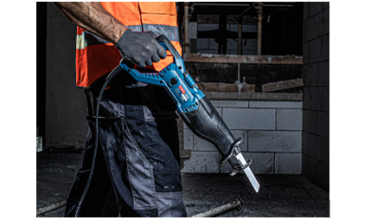Experience the Majestic Gokyo Lakes and Everest Base Camp Trek with Sherpas

Trekking the Gokyo Lakes and Everest Base Camp with Sherpas When the work is done, you have the experience of a lifetime. This trek explores some of the world’s most beautiful scenery, displaying majestic mountains, glaciers, and mountain lakes. But what truly makes this journey special is the opportunity to hike alongside the Sherpas, the native people of the Everest area who are deeply connected to the land.
What to expect on Gokyo Lakes and Everest Base Camp trek The Gokyo Lakes and Everest Base Camp trek takes trekkers through two of Nepal’s most iconic destinations: the tranquil Gokyo Lakes, located in the shadows of snow-capped peaks, and the renowned Everest Base Camp, the jump-off point for climbers attempting to summit the world’s highest peak. As you traverse lush valleys and suspension bridges and climb up to the high Himalayas, the Sherpas add depth to your experience. Providing trekkers with a comforting sense of safety and reassurance, their deep understanding of the terrain, intimate knowledge of the local culture, and expertise in navigating the high-altitude environment are invaluable.
Not just expertly skilled as guides, they also share stories to provide a glimpse of the culture, traditions, and spiritual significance of the surrounding area. They help trekkers make sense of the significance of sacred sites, share the history of the Sherpa people, and explain the significance of the mountains to the people there. This cultural exposure is as rewarding as the trek itself, turning what would be another physical challenge into an act of cultural appreciation.
The Sherpas also accompany trekkers on their journey putting them at ease and worry-free so they could enjoy the aesthetics of the Himalayas. Under their supervision, hikers not only arrive at their destination but do so in a manner that encourages respect, awareness, and a closer relationship with the amazing Himalayas.
Gokyo Lakes and Everest Base Camp Trek Overview
The Gokyo Lakes and Everest Base Camp trek Cost is a popular trekking route that combines stunning mountain scenery with a rich cultural experience. Located in the magnificent Khumbu region of Nepal, this trek provides unrivaled views of the Himalayas including Mount Everest, the highest mountain on the planet. The Everest Base Camp trek reaches the base of Everest, whereas the Gokyo Lakes trek offers a separate way to see several placid glacial lakes and views of the mountain. As it offers a wide range of trekking experiences, many trekkers opt for combining both treks for a better exploration of the Everest region. You will also pass by Sherpa villages, Buddhist monasteries, and breathtaking scenery, all whilst experiencing the beautiful culture of the area. Due to the high altitude and physically demanding conditions of the trail, it is important to be familiar with trekking in such a remote and high-altitude environment and to be well prepared. Experienced Sherpas guide trekkers along the arduous terrain and harsh weather conditions, making sure their life journey remains guided through one of the bewitching world landscapes.
A Guide to Sherpas on Your Himalaya Trek
Everest Base Camp Gokyo Trek Distance Your Himalayan adventure would not be the same without the crucial help of the Sherpas. There are, of course, additional cultural factors that also contribute to the effectiveness of Sherpas — Indigenous to the region, they have well-documented genetic and phenotypic adaptations to hypoxia, enabling them to thrive in the fab Flores mts of Everest and Gokyo, as well as an innate understanding of its terrain, weather patterns, and high-altitude conditions. They also serve as expert guides, helping the climbers navigate the treacherous terrain, while porters bear heavy gear, set up camps, and manage logistics. They are invaluable at helping trekkers acclimatize and helping them avoid altitude sickness, and their experience in high-altitude environments is not something one can just learn overnight. Sherpas are trained to identify the signs of altitude sickness and can administer immediate first aid or escort trekkers down to a lower elevation if there is a need to do so. In addition to their technical skills, Sherpas provide insight into the local culture, offering tales from their heritage and the significance of the sacred mountains. Their understanding of area Buddhist traditions, monasteries, and local customs enhances the trekking experience, adding more depth to its meaning. Having a Sherpa with you means you will be in safe hands and be able to concentrate on the physical and mental challenge the trek presents, secure that a professional guide is leading the way. The relentless support and guidance are a make-it-or-break-it element in having a successful and pleasurable hike in the Himalayas.
Gokyo Lakes and Everest Base Camp Route Quick Overview
The trek to Gokyo Lakes and Everest Base Camp takes trekkers on two different and supremely beautiful tracks through the Khumbu region of Nepal. The most common, famous route is the Everest Base Camp trek, which takes trekkers to the foot of Mount Everest. [Note: Treks begin in Lukla, and pass through the busy town of Namche Bazaar, where trekkers first begin to feel the effects of the high altitude.] The journey takes you past Buddhist monasteries, through charming Sherpa villages, and all the way to the Everest Base Camp, where you are greeted with spectacular views of Everest and its neighboring mountains. Trekkers can also make a detour to Kala Patthar for panoramic views of Everest’s summit along the way.
The Gokyo Lakes trek, on the contrary, is a quieter and less-traveled route, leading trekkers towards a string of beautiful glacial lakes, nestled among the lofty peaks. The route through verdant woods and rocky terrain eventually arrives at Gokyo Ri, a peak that boasts stunning vistas of Everest, Lhotse, and Cho Oyu. The Gokyo Lakes trek is less crowded than the Everest Base Camp trek, as seeking solitude and spiritual renewal are not common goals for many trekkers, who make up the majority of Himalaya trekkers. Most of the trekkers combine both treks to witness the charm of this region and make for a memorable Himalayan experience.
Best Time to Visit: Timing Your Trekking Adventure
The Gokyo Lakes and Everest Base Camp trek is best undertaken in the spring (March to May) and autumn (September to November) seasons. These months offer the most predictable weather, with sunny skies, moderate temps, and low chances of rain or snow. Spring is especially lovely, with rhododendrons covering the trekking trails, and the daytime temperatures are mostly warm with cool nights. Yet, autumn attracts the clearest skies and, therefore, some of the best visibility, making it perfect for catching the Himalayan vistas.
Additionally, the paths are snow-free and ice-free during these peak seasons, thus reducing the risk of avalanches. This trek should not be performed in winter (December to February) and summer (June to August). Winter brings freezing temperatures, heavy snowfall, and tricky trail conditions, while summer can bring monsoon rains that can trigger landslides and muddy trails. Hiking at times outside of the prime seasons also means the possibility of harsher weather conditions, which makes the hike difficult and dangerous. If you are looking for the safest and the most scenic trek, then plan the trek in the spring or autumn months.
Preparing Yourself: The Physically and Mental Trek
The best preparation for the Gokyo Lakes and Everest Base Camp trek The trek is strenuous, with long days spent hiking at high altitudes, so being in shape is vital. Aerobic fitness is important since the trek will test your endurance, with steep climbs, rocky paths, and daily treks of 5 to 8 hours. One of the best ways to build stamina is to incorporate a regular fitness routine into your life, including some cardio-based exercises like running, hiking, or cycling. Strength training exercises for the legs, core, and upper body will prepare you for the most physically demanding sections of the trek.
Equally so is mental preparation. Individual trekking days can be long; altitude sickness, weather changes, and fatigue can also make the demands of following through this trek cumbersome. Visualization, meditation, or mindfulness practices can help develop mental resilience. It’s worth mentally preparing for the isolation, the harsh conditions, and the fact that the journey will take you away from modern comforts. It also is about adjusting your expectations — the pace of high-altitude trekking tends to be slower than a typical trek so be mentally prepared for that. All in all, a good mindset, preparedness, and determination are your best friends and will carry you through the journey ahead, allowing you to enjoy the trek to its maximum.
Acclimatization and Handling Altitude Complications
Everest Base Camp with Gokyo Lake Trek Cost One of the key considerations while doing the Gokyo Lakes and Everest Base Camp trek is acclimatization, since the trek reaches insane heights of over 5,000 meters (16,404 feet) where oxygen levels have dramatically lowered. As the body acclimatizes, it learns to cope with the lower levels of oxygen that the thinner air provides, thus minimizing the risk of altitude sickness. To help this process along, climbers usually employ another tactic called “climb high, sleep low,” in which you go up to a higher elevation during the day and come back down to a lower elevation to sleep. This allows the body to become accustomed to higher elevations progressively, avoiding overexertion.
Sherpas do much of the management of acclimatization and altitude sickness, keeping an eye on trekkers for any signs of altitude sickness: headaches, dizziness, and nausea. If symptoms develop, it is critical to rest and, if needed, descend to a lower altitude. Getting enough fluids, sleep , and food also allows the body to acclimatize. The slow pace of the trek, and built-in rest days, help many trekkers avoid altitude sickness and enjoy the experience to the fullest. Following acclimatization, however, trekking with experienced Sherpas, and listening to your body, trekkers can find ways to manage the issues surrounding altitude and have an unforgettable and safe adventure in the Himalayas.
Must-Have Gear and Packing Tips
Packing the right gear for the Gokyo Lakes and Everest Base Camp trek is crucial to executing a safe and enjoyable hike. Clothes, shoes, and gear must comply with the extreme cold, wind, and changing weather conditions in this elevated place.
In terms of clothing, you need to join layers properly. Start with moisture-wicking base layers, then add insulating layers like a fleece or down jacket, and finish with a waterproof outer layer to protect against rain and wind. A good pair of trekking boots is essential for stability and comfort in rough terrain, and thick wool socks prevent blisters. To bundle up against the chill, a hat, gloves, and a scarf is also a necessity, particularly in the colder sections of the trek.
In addition, bring along a high-quality sleeping bag rated for cold weather, a headlamp with spare batteries, and a trekking pole to help alleviate pressure on your knees when ascending and descending. Remember a first-aid kit, water purification tablets, and a reusable water bottle, because hydration is important at high altitudes. Bring a camera to capture the stunning views, and a power bank to keep your devices charged.
Most importantly, pack your bags! Go with whatever you need for fun but also include items that will keep you comfortable and safe. A professional Sherpa guide can help ensure that you don’t pack too much gear, while also bringing the essential equipment needed for your safety and enjoyment.”
LOST IN THE BASIL THAT CANTERED THROUGH THE ROAD.
Everest Base Camp with Gokyo Lake Trek Itinerary Usually lasting 12 to 14 days, the Trek to Gokyo Lakes and Everest Base Camp is a rigorous yet fulfilling trek. The day-to-day itinerary allows plenty of time for acclimatization, exploration, and cultural immersion.
The hike starts with a flight to Lukla, where travelers descend gently into the Dudh Koshi Valley. Day 1 is a short trek to Phakding, where you settle into a cozy teahouse. The trek follows the classic route to Namche Bazaar, a bustling central Sherpa town, over the next few days, and from there, to the Everest View Hotel for stunning views of Everest.
After reaching Namche Bazaar, trekkers make their way towards the Gokyo Lakes, where they can get a glimpse of stunning views of Cho Oyu and other towering peaks. This portion of the trek allows for a rest day to acclimatize, thus enabling trekkers to wander around the lakes and adjacent glaciers. Then, the route leads to Everest Base Camp, where trekkers can enjoy the legendary feat of standing at the base of the tallest peak on earth.
The trek ends as you retrace your steps to Lukla, allowing plenty of time for reflection on the amazing experience. Every day on this trek presents something new, a well-tested trail of hard-ups, jaw-dropping vistas, and immersive cultural experiences.
Cultural Ingredients And Contact With Locals
The Gokyo Lakes and Everest Base Camp trek is one of the most beautiful treks in the world and one of its most enriching aspects is the chance to visit local Sherpa communities. This highlights the amazing culture, history , and religion behind the life of the people in the Everest region.
As you hike the paths of Phakding, Namche Bazaar, and Dingboche, you’ll be greeted by Sherpa families, many of whom have called these rugged landscapes home for generations. Sherpas are known for their kindness and hospitality, and you will get to experience their daily life, traditions, and customs. Visitors can frequently observe traditional ceremonies, such as the lighting of incense at Buddhist monasteries, and can even engage in rituals such as the spinning of prayer wheels or offering prayers on travel safety.
Along the way, you’ll also pass ancient stone mani walls carved with prayers, coast under colorful prayer flags strung on the breeze, and come across Buddhist stupas that mark the terrain. Learn the meaning behind these sacred symbols that reflect the Sherpas’ deep-rooted spiritual connection to the Mammoth and Himalayas—the details that your Sherpa guide will happily explain along the way.
Everest Base Camp with Gokyo Lake Trek Weather Such experiences add depth to the physical challenge of the trek that few can match with connectivity or height; and enable trekkers to admire not only the ethereal beauty of the mountains but also the culture of the people who live in its shadow.
Safety Guidelines and Emergency Procedures
When traveling in the Himalayas, particularly to places like the Gokyo Lakes and Everest Base Camp, safety is the main consideration. This area is so remote, but the altitude here is so high, it is crucial to take the necessary precautions and adhere to established safety protocols to facilitate safe passage.
One key element of safety in high-angle places is acclimatization. If you trek too quickly to high altitudes, you can develop altitude sickness, which is why it’s so important to take a gradual ascent, including rest days, to give your body a chance to acclimatize to the thinning air. Sherpa guides are trained on how to treat altitude sickness, will often be watching trekkers for warning signs and symptoms, and will be prepared to take appropriate action if necessary.
The region is also well-prepared in case of an emergency. In cases of medical emergencies or extreme weather, Sherpas are trained to handle the situation and, if needed, arrange for evacuation via local rescue services. Helicopter rescues are possible for emergency scenarios, but they can be expensive and require immediate organization. Sherpas also bring first-aid kits and know how to administer basic medicine to treat small injuries.
Safety also requires preparing your body for the strenuous effort on the trail. Many trekking groups can work with Sherpas who will check that trekkers have the proper gear and that they are in physical condition for the terrain they will traverse, as well as provide other support along the way. Trekkers can trust their expert guides, as the Sherpa guides offer trusted companions for your adventure.
Why Trekking with Sherpas is Beneficial
There are many advantages of trekking with Sherpas that enhance the entire trekking experience! Sherpas are not only masters of the pounds upon pounds of equipment most trekkers bring along to help set up basecamp or gorge the mountain slopes in the trek against Everest, but they are also cultural ambassadors who bring in invaluable insight into local customs, traditions, and more.
One huge benefit of trekking with Sherpas is how well they know altitude and acclimatization. Sherpas know how to deal with the difficulties of these high-altitude environments and guide trekkers in the important adjustment to the thinning air. They also make sure trekkers pace themselves properly, adjust their itinerary, and take heel days as necessary to avoid altitude sickness.
In addition, Sherpas are irreplaceable local sources of knowledge about the region’s culture, history, and traditions. Their storytelling draws trekkers into a deeper connection with the landscape, converting the trek into a fully immersive cultural experience. But Sherpas also are vital in providing emotional and mental support, encouraging trekkers through tough parts of the trail , and offering words of cheer when the going gets tough.
In addition to these practical and emotional benefits, Sherpas take care of trekkers’ safety — guiding them through the terrain and helping with emergencies. They know the local environment intimately, and their skills in high-altitude trekking are an indispensable asset to this remarkable journey.
Final Thoughts: The Gokyo and Everest Base Camp Trek Is Unforgettable
The Gokyo Lakes and Everest Base Camp trek is an incredible route that provides a once-in-a-lifetime opportunity to witness the majestic Himalayas and gain an insight into the culture of the Sherpa community. But with the experience and assistance of Sherpas, trekkers receive both a better awareness of the terrain, also a reassurance that they are being stewarded lower different ways.
This journey weaves together a high-altitude adventure with contemplative pauses when trekkers can stare out at the views, learn from their guides, and grasp the cultural importance of the sacred mountains. Whether it’s arriving at the legendary Everest Base Camp, picturesque next to the crystal-blue Gokyo Lakes, or sharing a meal with local Sherpa families, every step of the walk offers an experience to remember.
When traveling with Sherpas on the trekking trail, everything is guaranteed to be safe, enjoyable, and smooth. The workshops are accompanied by their advice and cultural insights, as well as emotional support throughout, and they contribute to turning the trek into more than a physical challenge, but a transformative adventure. Trekking Gokyo and EBC with sherpas is a mere once-in-a-lifetime experience that travelers will remember long after they are back home.




